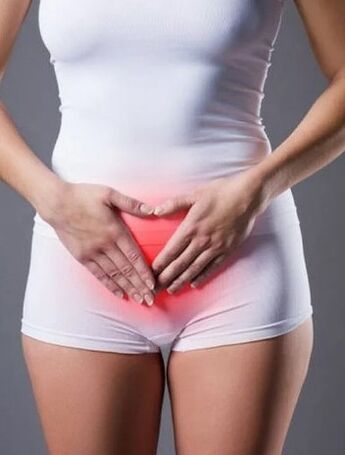The causes of the diseaseThe factors causing cystitis are used:
Infectious factor:It is represented by an E. coli, streptococci and / or staphylococci, for the location close to the anus and the urethra (in women);Sex infections (urealasma and mycoplasma);Instrumental intervention or introduction of an infection in the urethra or the bladder (most often microorganisms with a gram-negative cellular wall);Fungi, chlamydia, viruses;Inflammation in the genitorerinary organs of a man (seed bubbles, testiculum appendages, etc. );Tumor training;Anatomical differences; Allergy to care products (vaginal deodorants, colored toilet paper, talc, all kinds of perfume soap);Rare urination (characteristic of the elderly).DiagnosisThe following laboratory methods are used to diagnose the disease:A (general) blood test shows changes, among which there is a moderate inflammatory processThe analysis of the (general) urine displays color changes due to the presence of uric acid, leukocytes, red blood cells, proteins and, in some cases, there is a foul odorThe analysis of the urine by Nechiporenko allows you to study the organs of the genitorerinary system and their condition by calculating the number of leukocytes, red blood cells and cylinders in the urine. The results of the study are affected by the accuracy of the equipment of the equipment and the compliance of the patient to the rules of personal hygiene.Pathogenic microflora can be detected with an increased quantity of nitrates in the urine, detected using an indicator stripThe presence of pus in the urine is detected by means of a leukocyte reaction is.In addition to the laboratory diagnosis for cystitis detection, instrumental methods are carried out, the most common of them are cytoscape, biopsy, ultrasound, diagnosis of STD / STPP and others. ComplicationsWith a non -radical nature of treatment, cystitis can not only enter a chronic form, but also complicate with diseases such as:A state in which the renal function is disturbed - the volume of the released urine is reducedThe inflammation extends to the mucosa and into the muscle layer of the kidney, which is replaced by the result of the scar tissue, which leads to a decrease in the size of the kidney and the elasticity of its capsule.PMR - Too bad the structures of the valves, following which urine is revealed to the flow - in the kidney. At the same time, the location of the infection in the urinary system is preserved and the chronic form of pyelonephritis, renal tissue scars and renal operation for complete alteration occur.Disease treatmentThe therapy of the disease is based on the elimination of microbial inflammation - the deep cause of cystitis, which often occurs due to a weakened immune state. Therefore, the treatment of pathology implies the use of the following groups of drugs:Anti-inflammatory drugs (NSAIDs)Antibacterial drugsImmunomodulators.Risk groupThe risk group is weakened immunity, women infected with HIV and pregnant.PreventionCystite prevention measures are used:Lack of hypothermiaExamination of a gynecologist every six months for MST / SPPPStrict hygiene network, especially during sexual contactsRejection of narrow (thongs) and synthetic underwearTake care of sufficient lubrication during privacyAppropriate dietConstipation preventionStrengthening immunity.Diet and lifestyleIn the manifestation of signs of pathology, it is necessary to limit the use of solid foods, to replace it with broth, yogurts, potatoes and a large volume of liquid. After a drop in acute symptoms, a gradual introduction to the diet of solid foods is authorized - cereals, nuts and legumes. A variety of freshly pressed juice (vegetables and fruits) are useful for the body.When fever, bed rest should be observed, tablets and hot baths should be used. You can eliminate stagnant phenomena using cold compresses.





























